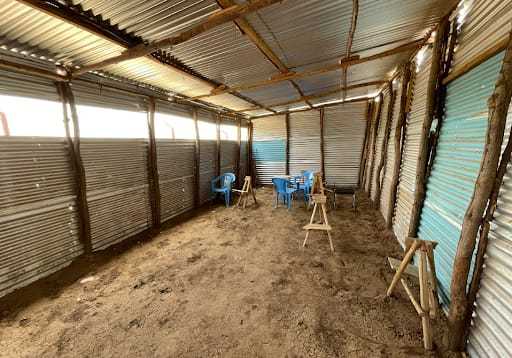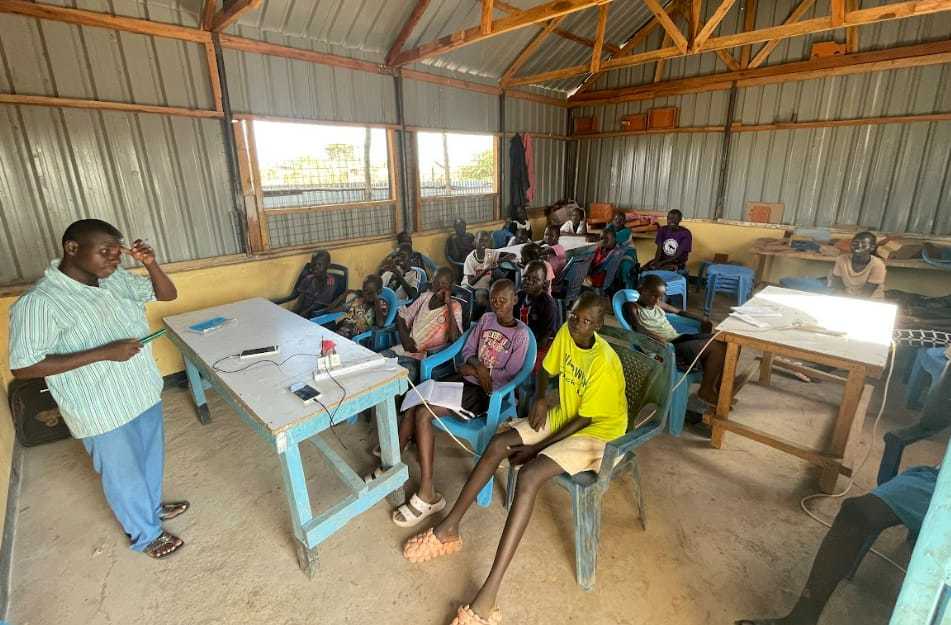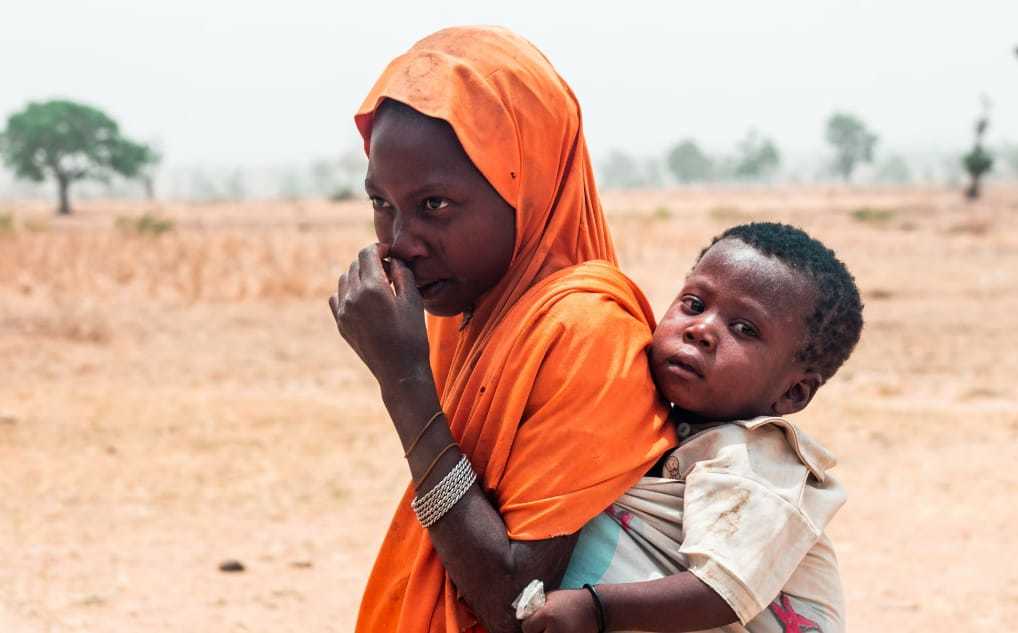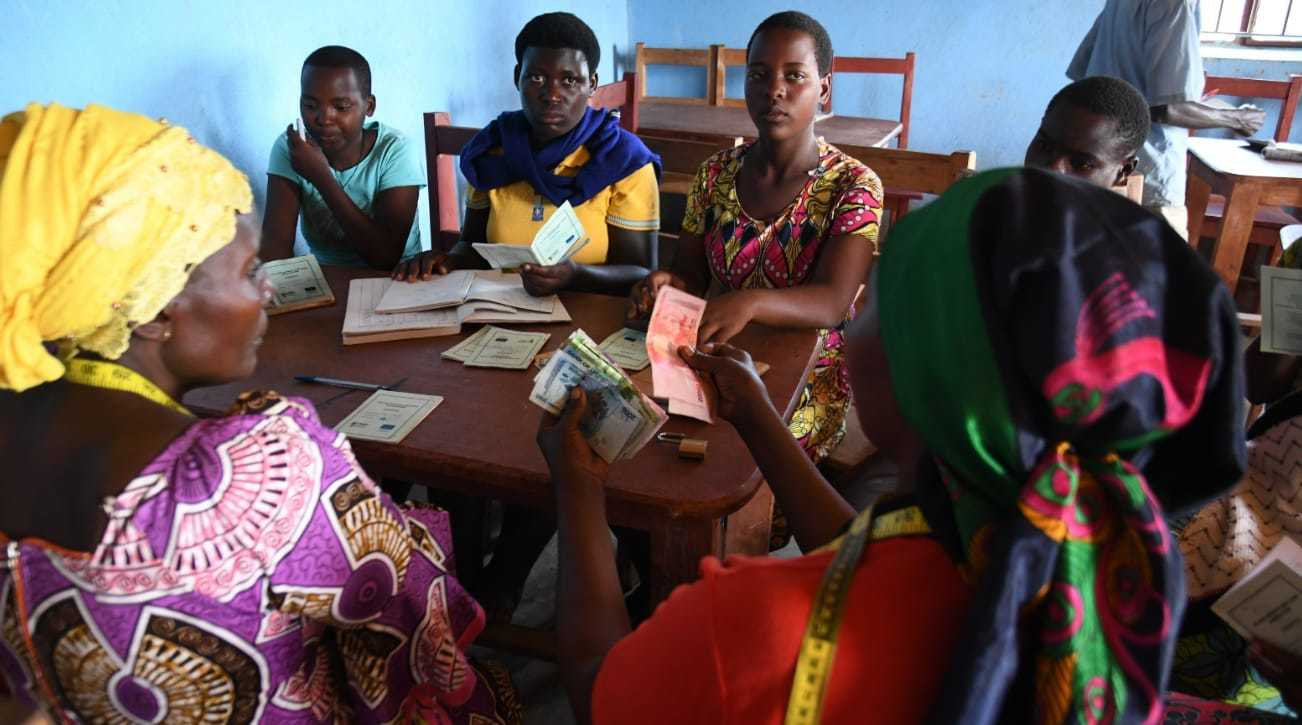Realpolitik In Aid
Tue, Nov 5, 2024
Read in 14 minutes
For over 20 years an organisation called InterAid was the main implementation partner for the most significant refugee response contracts in Kampala Uganda. All public funding allocated towards Education for refugees in Kampala, for example, found its way to InterAid. They were responsible for running education programmes in urban areas such as supporting schools with funds and learning resources, identifying out-of-school children, especially primary aged children, and training teachers. The problem was that InterAid did barely anything. According to all the schools we visited the funds were not being spent on anything related to refugee education or much else related to refugees. Eventually, after well over 20 years this became a more public fact and they had all their funding cut, and soon after the organisation folded.

I was first exposed to this scandal around ten years before InterAid’s eventual demise. It was not difficult to identify the large-scale corruption. InterAid’s reports documented renovations and learning resource provisions to schools we worked with closely where headteachers denied InterAid had even visited the school let alone provided any funding. I used to raise this concern with the international agencies that were funding InterAid and I was met with shoulder shrugging and weak attempts to claim that I might be mistaken. At a certain point I began to suspect that the international agencies knew exactly what was going on but felt that their hands were tied, as if funding one or two briefcase NGOs was a quid pro quo for an otherwise conducive working environment. There was a revolving door between InterAid and government parastatals and it was assumed to also be a revolving piggy-bank. I approached an investigative journalist with the suggestion that this could be looked into further. That never got off the ground but I was fascinated to know how far up awareness of InterAid’s corruption went within the humanitarian aid structures. Maybe even the global north donor agencies were aware. One thing I was sure of though was that the taxpayers in the global north funding this situation were not aware.
I have come across similar situations in other parts of East Africa. A suspicion of mine has been growing that public donors turn a blind eye to state sponsored corruption on a certain scale if it means that they can deliver their portfolio as a whole. If this is true, how openly is it discussed in public donor offices? Possibly worse are the examples of public donors enabling or perpetuating harmful policies and approaches under the guise of an aid programme that might actually have little to do with marginalised or vulnerable communities. In the case of Britain my suspicions that this was happening were fuelled when Boris Johnson stood at the dispatch box saying that British Aid needed to be more closely aligned with British interests. Unlike other politicians and diplomats before and after him he was at least being honest about what aid is all about for western governments - aid should not be a “great cash point in the sky” it should be there to promote the interests of the donor government.

For Britain this trend seems to have been increasing over the last decade. Where British aid may once have played a vital role in shaping the policies of African governments, the power of “Global Britain” has been decreasing. FCDO budget squeezes, cheap cash from China as well as growing African economies has meant that British Aid pounds carry less clout than in the past. Britain has increasingly used aid as a way of sustaining a competitive edge and keeping up relations in a world in which its power is waning. Boris Johnson himself referred to this in his speech in parliament when he said that Britain must strengthen its position in “an intensely competitive world”.
Looking at Britain’s aid relationship with Kenya over the last ten years can help give an interesting snapshot into the broad mix of motives that underlie aid strategies of a global north country. This relationship is clearly appraised in a report by the Royal United Services Institute. Britain’s aid relationship with Kenya demonstrates on the one hand a genuine commitment to development, such as via investments in Education. Quotes from the report frame the UK as Nairobi’s staple ‘partner for primary and early child education’. The UK has also invested heavily in healthcare infrastructure,the financial response to refugee crises, and other crises such as COVID seem to map the threats of the crisis as opposed to pure self-interest.

Nevertheless, on the other hand, the report also finds that there are instances where the UK’s motives in providing bilateral aid to Kenya have fairly clear self-interest or mixed motives. The UK views Kenya as a vital commercial hub and has a significant number of ‘aid-for-trade’ programs in the country. This indicates that part of the aid provided may serve to enhance UK trade and economic interests in Kenya. This makes sense in a country with 25,000 British nationals living as permanent residents (and 200,000 visiting each year). 5% of all Kenyan exports go to the UK and a lot of this is fresh food. 14% of all foreign direct investment equity held in Kenya is British equity. The British economy depends on Kenya to a significant degree.
Meanwhile the UK depends on its long-running cooperation with Kenya in military matters and has outlined the possibility of an ‘enhanced presence’ in the country. Kenya is strategically important to the UK for military access to Central Africa and plays a crucial role in counterterrorism, particularly against Al-Shabaab in Somalia. Since 1964 the British Army has had a permanent presence and large scale training facility base, which though supposed to have mutual benefit to both the UK and Kenya, has nonetheless been a constant source of trauma for Kenyan citizens. Countless examples of atrocious behaviour, from vandalism to rape and murder by British soldiers have been met with minimal redress or sympathy from the British government, alongside allegations of complicity and cover up.
The RUSI report also shows that the UK has been criticised for prioritising relations with the Kenyan government over accountability and reform. One respondent mentioned that initiatives instigated by the British High Commission to promote a more open society would not be met by support from London’s central control in Whitehall (p42). Whether this was due to sustaining a fragile relationship with the Kenyan government in relation to military strategy or trade dependencies, or due to insecurity about competition from other aid actors such as the US or China, or all of the above, we can see that Boris Johnson’s directive is being followed. Is it therefore such a leap to imagine that Whitehall is also able to turn a blind eye to the state sponsored “cut taking” through briefcase NGOs such as InterAid?
The chunk of British aid in Kenya that I am more familiar with concerns British contributions to the refugee response in Kenya. Between 2018 and 2023 Britain contributed over £50 million towards the refugee response in Kenya but none of this funding trickled down to Cohere because with the public funding we were receiving we were responding to the urban population of refugees in Kenya, the 100,000 or so refugees living in Nairobi and other cities. At the time, British funds excluded urban programming and was all dedicated to supporting refugee camps, as well as providing assistance to the areas immediately local to the camps. In Kenya I am sure that the encampment policy for refugees, which has survived for over 30 years, was stomached and supported by Western donors for so long because of aligned interests in containing the threat, real or perceived, from Somalia - Kenya could treat Somalis however they liked with funding from the West as long as Kenya remained an appropriate ally in the fight against terrorism. Although many other donors did fund the urban refugee programme in Kenya, the Kenyan government sporadically cracked down on refugees living in Nairobi and tried to send them to the camps. It seems the British were not willing to risk misalignment with the Kenyan government on the issue and instead implicitly condoned the conditions experienced by refugees in the camps, by only funding the camps. Both Kakuma and Dadaab are located in places not fit for humans to live for long periods, especially in numbers the size of a large city. As a consequence of policies they have had no hand in crafting, the thousands of people who have never left Dadaab have never seen a hill or a river or a lake or a forest, a city or the ocean or many of the other things the rest of us take for granted as features of our lives.

The quote mentioned above from the respondent about the British High Commission in Kenya being misaligned with Whitehall sheds an interesting light on the predicament faced by development professionals. They may join their national aid agencies with genuine motives to promote global development and meet the humanitarian needs of the most vulnerable only to be stymied by the realpolitik strategies their governments are pursuing behind the increasingly thin veil of “aid”. It is not necessarily the case that we cannot trust the colleagues recruited to front British aid, they may be connected to parts that are genuine or parts that are farcical and we have to give them the benefit of the doubt. However, we simply can’t trust that politicians elected to put British interests above all else to do anything other than precisely that, even if it is at the expense of the most vulnerable.
Unfortunately cynical and self-serving motives behind humanitarian aid are not unique to the UK. In a funding proposal for US government funding we were required to answer ten questions and two of them exclusively concerned how we would invest in visibility and branding for the donor, such as through signs of how the funds were “given by the American people”. The Canadian government released a call for proposals for refugee leadership in Africa but recipient organisations were required to be legally registered in Canada. NGOs receiving funding from the EU had to have a legal registration within the UK when we last enquired - just about the time when Cohere lost that status as a result of Brexit.

Public funders make up 81% of the $46 billion given in humanitarian aid and we have to assume that a significant proportion of this is driven by mixed motives - if all those countries were as open as Boris Johnson they would admit that their aid budgets should reflect the interests of the country.
There are some countries, notably the Netherlands, Canada and Switzerland who are exploring different ways of working that could have beneficial long term dividends for everyone in the world, including their citizens. There are signs that they see their aid programmes as a way to reduce global wealth inequalities and power imbalances which would surely mean that our descendants in generations time will live in a happier and safer world. Jan Egeland, the leader of the Norwegian Refugee Council, in his introduction to the 2023 Global Humanitarian Assistance Report, writes “Humanitarian assistance is not solely philanthropically motivated – we should change our narrative and discuss the benefits of humanitarian assistance as an investment in resilience and stability for a global common good.”
Unfortunately the approach of these few states is not the norm. Instead, countries from the global north, increasingly feeling their international clout waning in the way the British are experiencing, are increasingly using aid as a way of desperately clinging on to the power they enjoyed generations ago, as well as the inequalities those generations created.
Talking about shifting power and equitable partnerships in humanitarian aid with these institutions is a waste of energy - it won’t work. They have no interest in shifting the control of their aid strategy towards vulnerable communities, because at their roots the aid strategies are not about vulnerable communities but about the givers. Any nod by them to localisation and shifting power will be lip-service and a veil for a true ambition to conversely hold on to power. This is why since 2016 the amount of funding being allocated to local actors in emergency contexts has remained resolutely below 5% every year, often under 2%, with no trend in the direction of the 25% promised to be achieved by 2020 (2022 was 1.2%). This is also why public donors will not let go of their control of results and metrics of their funding programmes - they fervently need the data so as to be able to use their achievements as leverage in their geopolitical endeavours. X million girls in school translates to Y million benefits in trade balance and Z million dollar based defence contracts. This is also, therefore, why aid agencies will not dare to trust their aid recipients (see my blog on due diligence) - vulnerable communities are not there to be trusted, but are there to be pawns in that donor’s game of realpolitik. Then as shown in my second blog, large corporatised NGOs are happy to be complicit in this game as long as it serves their real objective of competitive advantage and survival.
When, in 2016 at the World Humanitarian Summit, these agencies signed the dotted line on the agenda for localisation of aid, our sector, (naively, we can now say) took that as genuine intent for change and went about providing strategies for funders and iNGOs to shift power towards the recipients of aid. This included guidelines and check-box proformas, learning programmes, diversity and inclusion programmes and workshops that if taken on as a whole would have done an impressive job in providing those with power with clear strategies for how to give up some of their power and sustain equitable partnerships with grantees. But the problem is that any effort to clarify and embolden the “how” of shifting power will continue to be totally undermined by a disingenuous intent.
It will be undermined firstly because the guidelines very quickly become irrelevant when applied in evolving and unique contexts and as such ever more absurd levels of detail are needed to guide aid workers in how they must behave, despite their lack of real interest in changing their behaviour. When guidelines are needed for new contexts and unforeseen events, guidelines have to be created as to how to create the guidelines because we can’t trust the aid sector to create the guidelines in a way that is equitable.
Secondly, and more importantly, this effort will be undermined because when an equitable partnership is built on proforma and not on intent and shared values, vulnerable communities will know. No amount of structure given to an interaction, from translation services to gender balance interventions, preparations for meetings and financial compensation will ever convince a leader from a vulnerable group that any of this is meaningful and that a pursuit of equity is real, if in fact it is not.
Trying to persuade those with control over the large bulk of public funding to humanitarian aid that it should be given more equitably is a worthy endeavour but we need to accept that it is unlikely to work. It is built within their institutional structures to ensure that nothing of substance changes and trying to show them how to change might not be the best use of our time. When nothing changes, it is not that nothing improves for vulnerable populations, but worse- harmful practices continue, and global injustices and power imbalances threaten to put hundreds of millions more of us into emergency situations. At what point do we realise that 500 million people, or around 7% of the world’s population facing a crisis, constitutes a crisis not just for that 7% but for the remaining 93% as well? This is no longer a case for charity it is case for collective action. We do not need the traditional humanitarian aid system to be the channel of that action, in fact it is time we recognise it as part of the problem.
$38 billion, the public funding of humanitarian aid, sounds like a lot of money and we have been distracted by this into thinking that we are stuck within a system that will never change. But, firstly, it is not a lot of money. It would soon look like a negligible footnote if humanitarianism was resourced in a way that could actually reduce fragility, conflict and emergency.
Secondly, we have not fully explored a parallel humanitarian aid system that is based on meaningful relationships that reflect the interdependent relationships we will need to rely on if we are going to avoid the world sliding towards chaos.
While it may seem overwhelming to overhaul humanitarianism (it is), the good news is that better ways of working together already exist. The other good news is that all of us are equally qualified, and equally invested in shifting humanitarianism back in the direction of our shared humanity so it should not be hard to find recruits. In the next two blogs we will look specifically at the what are the implications of all these considerations of those who describe themselves as humanitarian donors and want to share their resources in ways that will be meaningful and appropriate.
References:
- Royal United Services Institute (RUSI). Bargaining with the Green City in the Sun: An Appraisal of UK Engagement in Kenya. 2023.
- UK Government. UK-Kenya Development Partnership Summary. July 2023. Available at: https://www.gov.uk/government/publications/uk-kenya-development-partnership-summary/uk-kenya-development-partnership-summary-july-2023
- BBC News. Abandoned British Army Children in Kenya. 2024. Available at: https://www.bbc.co.uk/news/articles/cedd92vn5lko
- CNN. British Army Abandoned Children in Kenya. 2024. Available at: https://edition.cnn.com/2024/06/17/africa/british-army-abandoned-children-kenya-intl/index.html
- Brannkamp, H., & Gluck, S. (2022). Camps and Counterterrorism: Security and the Remaking of Refuge in Kenya. In their report, they conclude: “The rise of counterterrorism as a hegemonic securitizing logic and network of material infrastructure has introduced overlapping donor pressures to secure East Africa’s ‘frontline’ in the global War on Terror and thereby, once again, enabled Kenya’s institutional proclivity for dispensing state violence and counterinsurgency against ethno-racialized minorities.”
- Development Initiatives. Global Humanitarian Assistance Report 2023. Available at: https://www.devinit.org